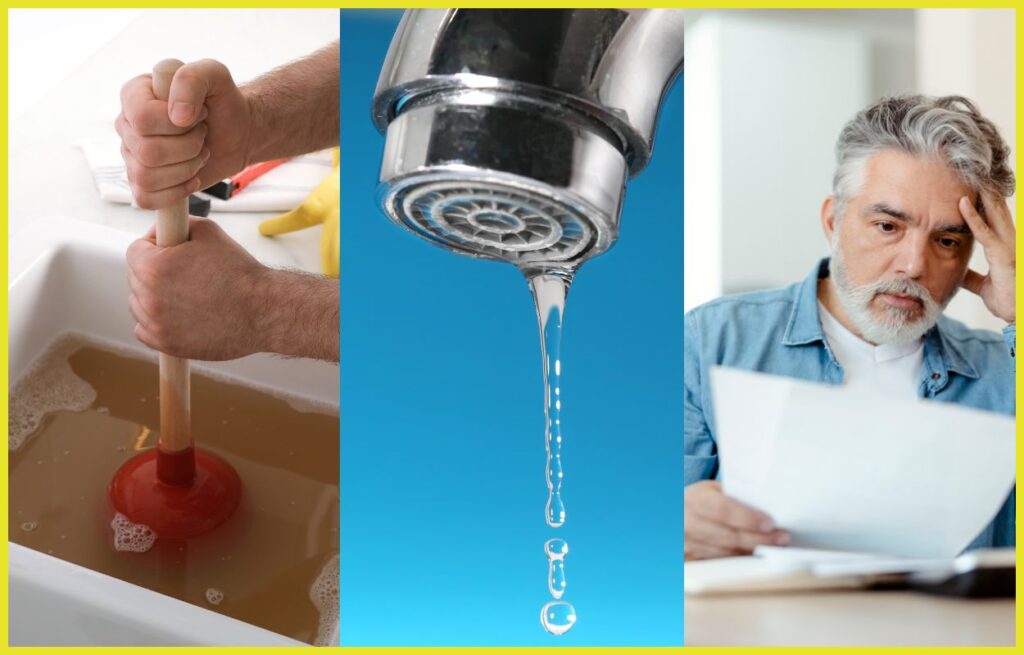Your plumbing system is one of the most essential parts of your home, but it’s often out of sight and out of mind – until something goes wrong. Small issues can go unnoticed for weeks or months, eventually leading to water damage, mold, or costly repairs. That’s why it’s so important for homeowners to recognize the early signs of plumbing problems and take action before they escalate.
Here’s a guide to identifying common plumbing problems in your home – and why scheduling a whole-home plumbing inspection is the best way to ensure your system is safe, efficient, and functioning as it should.

1. Low Water Pressure
If your water pressure has recently dropped, it could be a sign of a hidden issue. Low water pressure can result from:
- Mineral buildup in pipes
- A hidden leak
- Problems with the municipal water supply
- A failing pressure regulator
While it may seem like a minor annoyance, low water pressure often points to bigger problems within your plumbing system. A professional inspection can identify the source and recommend the appropriate fix.
2. Slow or Frequently Clogged Drains
A single clogged drain may be an isolated issue, but if multiple drains in your home are slow or frequently backing up, it’s likely a sign of a deeper blockage or issue in your main sewer line. Other signs include:
- Gurgling noises in the drain
- Water backing up into sinks or tubs
- Foul smells coming from drains
Left untreated, a clogged sewer line can result in raw sewage backing up into your home – an expensive and unpleasant problem that a whole-home plumbing inspection can help prevent.
3. Unexplained Water Stains or Damp Spots
Water stains on ceilings, walls, or floors can signal a hidden pipe leak. These leaks can develop slowly over time and cause significant damage to your home’s structure if not detected early. You may also notice:
- Warping or bubbling paint and drywall
- A musty or moldy smell
- Unexplained wet spots on carpets or floors
A plumbing inspection can pinpoint the location of leaks – even those hidden behind walls – and prevent further damage.
4. Unusual Noises in Pipes
Do your pipes bang, whistle, or make knocking sounds when you run water? These noises can indicate air in the pipes, high water pressure, or loose pipe fittings – all of which can lead to further problems if ignored. During an inspection, a plumber can diagnose the issue and take steps to secure or replace problematic sections of piping.
5. Rising Water Bills
If your water usage hasn’t changed but your bill has gone up, you could have a hidden leak somewhere in your home. Common culprits include running toilets, dripping faucets, or slab leaks that are difficult to detect without professional tools.
Why Schedule a Whole-Home Plumbing Inspection?
Even if you haven’t noticed major problems yet, a whole-home plumbing inspection is a smart, preventive step. Here’s what it includes:
- Checking water pressure and flow throughout your home
- Inspecting all exposed pipes and connections for leaks or corrosion
- Examining water heaters, shut-off valves, and drain lines
- Testing fixtures for proper function
- Inspecting sewer lines for signs of blockages or root intrusion
This comprehensive approach allows plumbers to identify potential issues before they turn into emergencies, saving you time, money, and stress.
For HVAC service you can rely on, trust Mahalo Heating and Air Conditioning. We’re proud to serve Douglas County with excellence, one customer at a time!












